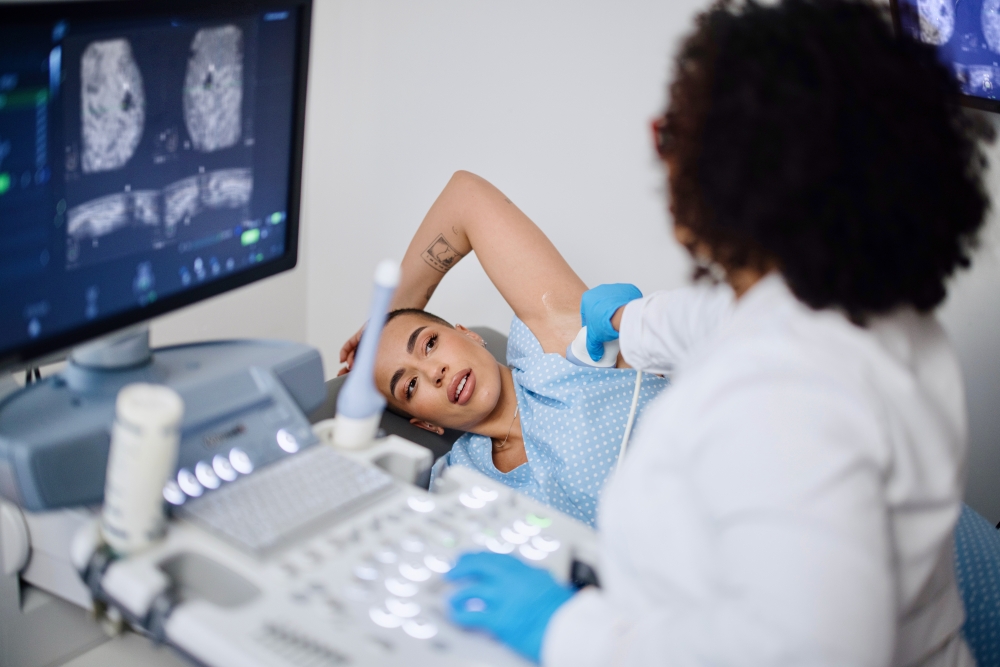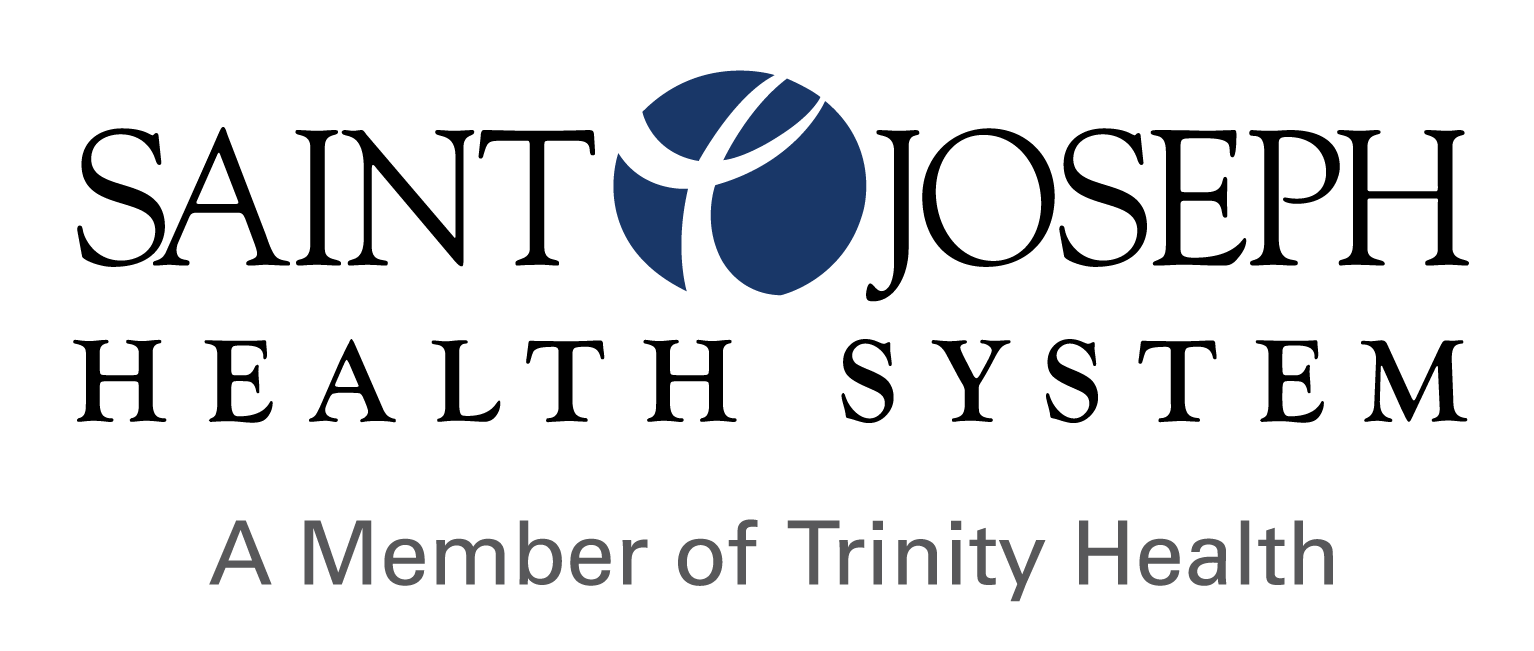The Importance of Breast Health: A Comprehensive Guide for Women
October 28, 2025
By: Diana Sarfo, MD
Categories: Cancer
Taking care of your breast health is one of the most important things you can do for your overall well-being. With breast cancer being a leading concern for women, being proactive about your health can make all the difference. By understanding your risks and following certain guidelines, you can take control of your breast health and reduce your risk.
"Breast cancer is one of the most common forms of the disease for women. Over 10% of women will be diagnosed in their lifetime. That's why it's so crucial to understand your risks and learn how to keep yourself healthy," says Diana Sarfo, MD, from Saint Joseph Health System.
Family History
Genes are short segments of DNA found in chromosomes, thread-like structures found in the nucleus of animal and plant cells. They are similar to an instruction manual, explaining to your cells how they should grow and function. However, sometimes these instructions are incorrect, leading to DNA changes that could be inherited from parent to child.
If a patient inherits breast cancer, it is most likely the result of mutations in two genes: BRCA1 and BRAC2. Everyone has these genes and, normally, their role is to help breast and ovarian cells grow properly. Yet it's estimated that 5 to 10% of breast cancer cases are due to inherited changes of these genes.
Having one of these mutations doesn't mean you are guaranteed to be diagnosed. Still, you're much more likely to have a breast cancer diagnosis linked to genetics if you have one or more of the following:
- Blood relatives on either of your parent's side who had breast cancer before the age of 50.
- Breast and ovarian cancer history on the same side of the family.
- A relative with triple-negative breast cancer.
- You are of Ashkenazi Jewish ancestry.
- You are African American.
"When a first generation family member, such as your mother or sister, has been diagnosed with breast cancer, genetic testing becomes an essential step. We often test for BRCA1 and BRCA2 mutations, which can significantly increase your risk. Knowing your genetic status can help you and your healthcare provider make informed decisions about your breast health," says Dr. Sarfo.
Genetic counseling
If you believe you're at risk of breast cancer due to family history, genetic counseling may be recommended by your doctor. This test is for those interested in determining if they carry the gene mutation that increases their risk of breast cancer. It's a simple test that involves taking small samples or blood and/or saliva which is sent to a lab for analysis.
Regular Mammograms
Receiving regular mammograms is the most important thing a woman can do for their breast health. A mammogram is a low-dose x-ray that allows a radiologist to examine breast tissue and detect changes over time, including:
- Asymmetries
- Calcifications
- Distortions
- Masses
There are two types of mammograms: screening and diagnostic. As the names suggests, screening mammograms are used to look for signs of breast cancer in women who don't show symptoms. The diagnostic version are for women who show symptoms and they are usually more detailed.
For women without family history, the recommended age to start receiving yearly mammograms is 40. If you have family history, your primary care physician may recommend starting earlier.
"It’s crucial to prioritize annual mammograms, especially for women with a family history of breast cancer. Whether it's your mother, aunt, or sister who has been affected, starting these screenings at 40—if not earlier—can make a significant difference in early detection and, ultimately, in successful treatment outcomes," says Dr. Sarfo.
Common misconceptions
Unfortunately, despite the importance of the test, over 30% of women over the age of 40 have not received a mammogram in the last 2 years. While there are many reasons for this, some common misconceptions may be contributing to women not receiving this critical screening.
- Unsafe level of radiation: A mammogram is an x-ray so women undergoing the procedure will be exposed to a certain level of radiation. However, unless they are pregnant, the amount of radiation is well within medical guidelines, and the potential risk of breast cancer outweighs the radiation level.
- Annual mammograms are not needed: This test can only detect breast cancer, not prevent it. While a negative result is great news that doesn't mean future mammograms won't show something new. Receiving yearly tests is the best way to catch breast health changes.
- Referrals are required: A woman does not need a referral from a doctor for this test. You can schedule the appointment yourself every year.
- Mammograms are very painful: The test compresses the breast so the x-ray can see its structure. While this can be uncomfortable, it's not extremely painful for almost all women.
"The fear of pain during mammograms often deters women from getting this life-saving screening. However, there are ways to manage any discomfort—taking Tylenol or ibuprofen beforehand can help. Remember, a few minutes of discomfort during a mammogram is far preferable to facing the potential risks of undiagnosed breast cancer. This noninvasive procedure could be the difference between early detection and a much more complicated treatment journey," says Dr. Sarfo.
Lifestyle changes
Not all lifestyle changes will lower your risk of breast cancer. While eating a healthy, balanced diet and getting enough physical exercise is wonderful for your overall health, there isn't much research proving a link between the two.
However, there are certain lifestyle changes that, when stopped completely or at least lessened, can decrease your risk over time.
Limit alcohol consumption
Consuming alcohol drinks increases your risk of breast cancer. It doesn't matter what type you drink as it's the alcohol itself that causes damage, even in small amounts.
- Damage to cells: Our bodies convert alcohol into a chemical called acetaldehyde which can damage our cells and stop them from repairing.
- Changes to hormones: Alcohol can increase the levels of some hormones. Higher levels of certain hormones can increase the frequency of cell division which then increases the chance that cancer will develop.
It's estimated that alcohol causes 7 of every 100 new cancer cases, representing almost 40,000 diagnoses. It's classified as a Group 1 carcinogen, is casually linked to 7 types of cancer, and there is no safe level of alcohol consumption. The risk of breast cancer increases with every drink consumed per day, with more than 10% of alcohol-attributed cases coming from just drinking 1 bottle of beer or 2 small glasses of wine per day.
Stop smoking
Despite the decrease in tobacco use in the United States, it's still the leading cause of preventable disease and death. Tobacco contains carcinogens that become stored in breast tissues. Not only can this induce early menopause, but current and former smokers are much more likely to be diagnosed with, and die from, breast cancer.
To quit smoking can be challenging, but with the right strategies and support, it’s entirely achievable.
- Set a quit date: Pick a date within two weeks to quit completely. This gives you time to prepare and stay motivated.
- Know your triggers: Identify situations or emotions that make you want to smoke, and plan how to avoid or manage them.
- Use nicotine replacement: Consider nicotine patches, gum, or lozenges to ease withdrawal symptoms. Consult your doctor for the best option.
- Stay busy: Keep your hands and mind occupied with activities like exercise, hobbies, or chewing gum to distract from cravings.
- Build a support system: Tell friends and family about your plan. Their support, along with counseling or a support group, can boost your success.
If you need guided help from medical professionals, Saint Joseph Health System is here to support you.. Tobacco Initiatives helps improve the quality of life and overall well-being of citizens of St. Joseph County.
